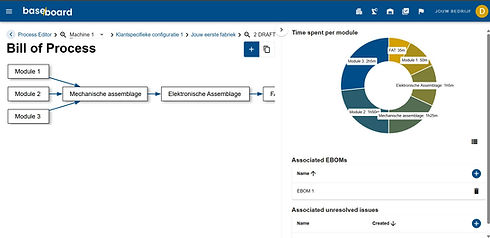
Managing work instructions
Recording work instructions requires converting knowledge and expertise into understandable step-by-step procedures, but static documents and time-consuming updates quickly render instructions obsolete and impractical.
Up-to-date, understandable work instructions
‘This instruction is already outdated immediately after printing.’
Work instructions are often limited to static, printed Word documents or PDFs that are difficult to update and quickly become outdated. Converting expertise into understandable instructions is time-consuming, especially when complex procedures need to be explained to operators with varying levels of experience. Without visual support and interactive elements, instructions remain abstract and difficult to follow. Changes in processes lead to outdated instructions that confuse operators and can lead to errors. There is a lack of version control and feedback options to continuously improve instructions.
Baseboard makes it easy to record work instructions by directly converting multimedia content such as videos, files and audio into step-by-step procedures. The system supports drag-and-drop functionality for quickly compiling instructions without technical knowledge. Automatic synchronisation with engineering data ensures that instructions are updated immediately when processes change, so that operators always work with the most up-to-date version. Feedback from operators is directly linked to specific instruction steps, enabling continuous improvement.


The system builds up an instruction library in which best practices and successful procedures can be reused for similar processes. By analysing usage statistics, it becomes clear which instructions are most effective and where operators are experiencing difficulties. This leads to data-driven optimisation of instructions and increases overall process effectiveness by adapting procedures to the actual needs of operators.
